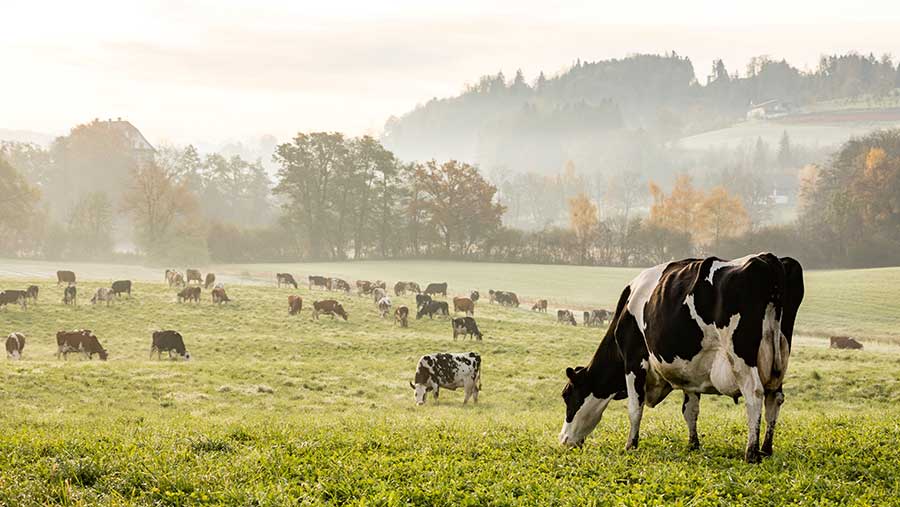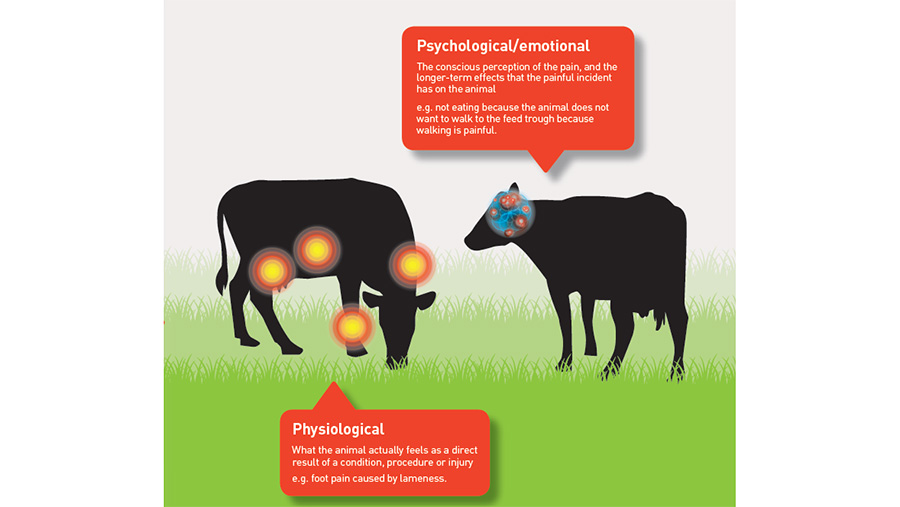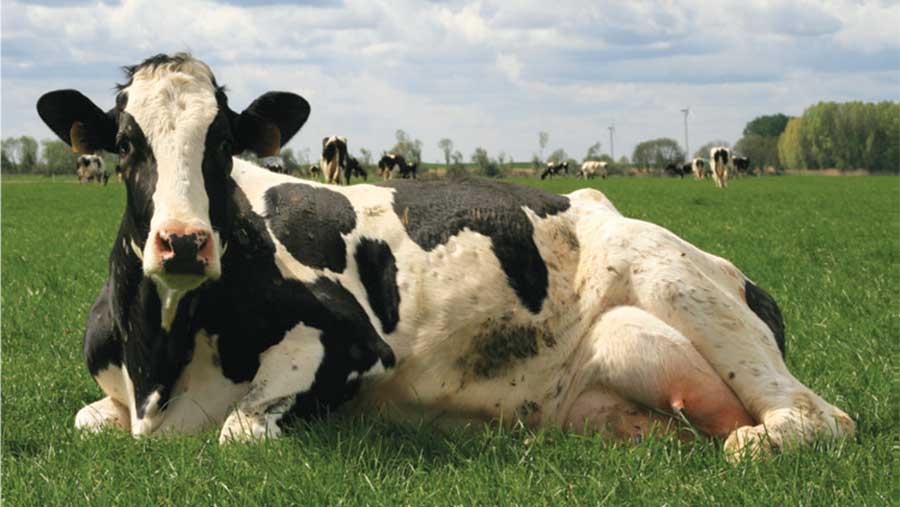Advertiser content
Pain management in cattle
 © Norbook
© Norbook What is pain?
Pain is defined as an unpleasant sensory and emotional experience associated with actual or potential tissue damage, It can be described as:
- Physiological – what the animal feels as a direct result of a condition, procedure or injury
- Psychological – the conscious perception of the pain, and the longer-term effects the painful event has on the individual
- Acute – pain related to damage of tissue due to trauma or inflammation
- Chronic – continued pain related to damage of peripheral or central nerves causing neuropathic pain. Chronic pain can also be associated with hypersensitivity in the local area where there is pain in the absence of identifiable damage to nerves or tissue.

There are effective treatments to provide analgesia (pain relief) in cattle with acute pain however, managing chronic pain effectively is not possible with pain medication alone.
Signs of pain
Cattle are a prey species and therefore don’t readily express signs of pain. However, there are many signs that farmers can look out for that may indicate the animal is in pain. These include:
- Off food
- Separation from group mates
- Hunched or tucked up stance
- Kicking, rolling, getting up and down
- Vocalisation
- Tail swishing
- Teeth grinding, increased salivation
- Abnormal head, ear position
- Shaking, twitching, muscle tremours
- Lameness / impaired mobility
- Visible reddening or swelling
Unfortunately, a lot of these signs are vague and don’t point to any one problem, condition or disease process, however they can be useful indicators to prompt further investigation.
Farmers may then be able to identify a high temperature which can be associated with pain and inflammation or that the animal has been less productive recently (e.g. poorer milk production, growth rates or even weight loss).
Any animal in pain will be less productive which comes at a financial cost but if the painful condition/injury/disease process is not treated effectively then the animal may deteriorate and succumb causing a significant economic loss.
Managing pain
As a farmer you have a legal responsibility under the Animal Welfare Act 2006 to prevent unnecessary suffering to animals under your care.
Furthermore, the Farm Animal Welfare Committee include freedom from pain, freedom from discomfort and freedom to express normal behaviour amongst their “Five Freedoms”.
Increasingly market contracts stipulate appropriate pain management for common husbandry procedures, injuries and diseases seen on farms.

© Norbrook
Treatment options for farmers are split into three categories:
- Local Anaesthetics – these numb a local area for a short period of time (typically 30-90 minutes) allowing painful husbandry procedures to be conducted by farmers. These are the same products used by vets to carry out surgical operations. These products don’t have withdrawal periods.
- Non-steroidal Anti-Inflammatories (NSAIDs) – there are a number of different products that are licensed for use in cattle to treat pain. They are licensed for certain uses e.g., disbudding, lameness or mastitis. Normally these come in the form of injectable products which farmers can purchase from vets and administer themselves as per the prescribed veterinary instructions. These products all have withdrawal periods, but they vary by product.
- Corticosteroids – there are several steroid products available. It is important to differentiate steroids from NSAIDs. Steroids are very good at reducing inflammation, but they have very poor pain relief properties. Steroids need to be used carefully as they have a number of side effects, some of which can be serious.
A multimodal approach to pain management
In farm animals there are numerous situations where it is appropriate for a combination of pain relief treatments to be used together.
This approach is known as a “Multimodal approach” to pain management.
An example of this is the use of a local anaesthetic for a local nerve block around the horn bud as well as the use of a NSAID injection in calves being disbudded.
This combination of products has been shown to have a cumulative effect on reducing pain and results in improved weight gain post disbudding.
Recent research has also shown that pain responses in calves disbudded with caustic paste mirror that of those disbudded using a hot iron disbudder but the pain response is delayed by 15-20 minutes.
A multimodal approach of local anaesthetic and NSAID injection when using the caustic paste is therefore likely to result in improved pain management during chemical cauterisation of horn buds in calves.
This article is brought to you by Norbrook, manufacturers of Adrenacaine.
Provided by
Norbrook is one of the largest, family owned, veterinary pharmaceutical companies in the world, dedicated to enhancing the health of farm animals.
